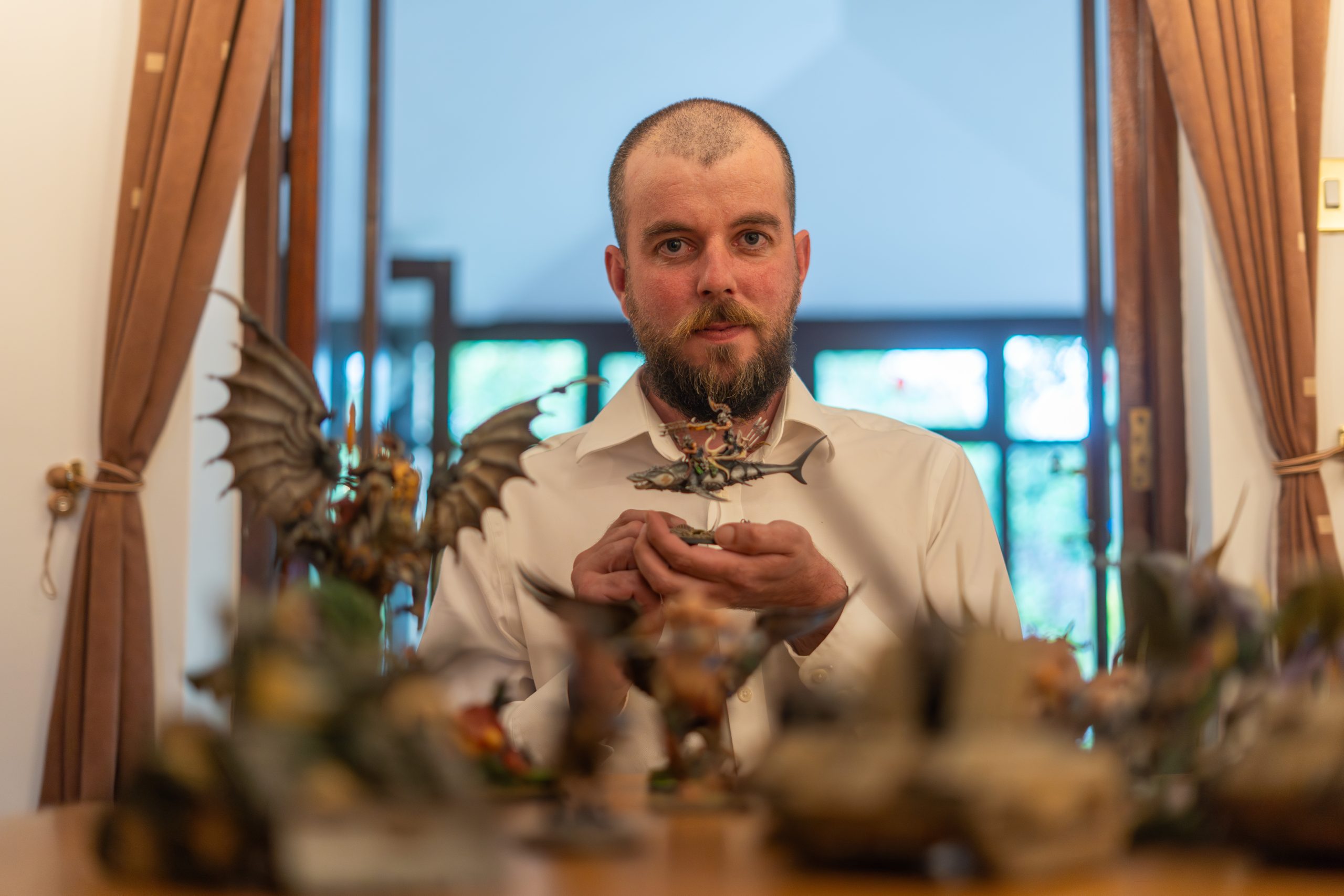Out of office: Simon Wilkinson
In the latest instalment of a series exploring businesspeople’s lives beyond the workplace, Steven Hugill speaks to Simon Wilkinson, Wilkinsons Landscapes managing director, about his love of painting, which covers both canvas creations and model gaming pieces.

You complement your role as managing director with a passion for painting. What was the spark that made you pick up a brush?
I’d always enjoyed art at school, though I wouldn’t have said I was amazing.
Since I was very young, I’ve enjoyed painting models, which, because of their scale, gave me a lot of dexterity with a brush and an eye for detail.
One day, I was bored at home, and I didn’t have any new models to paint, so I decided to try a different medium – and loved it.
You like to paint landscapes. What is it about that discipline you so enjoy?
When you’re painting models, you have to consider how to use tones and shades to create more realistic texture, shadows and depth.
With landscapes, it’s the same; I’m interested in how the effect of light and different types can change the feeling a viewer gets from a piece.
Introducing different shades over layers of paint can change how the land falls, and as a landscaper I am always observing and considering the history of a landscape – what happened to make it look the way it does and how people and the elements have made an impact.
By its very nature as a garden landscaping business, Wilkinsons has creativity at its core. Are there any crossovers between your job and pastime? Do skills from one help influence the other?
Absolutely. In both circumstances, I am aiming to create something well composed, with textures and colours that will make the person looking at it feel one way or another.
I am making decisions about what to add or remove, whether it’s on a canvas or in a garden.
When I visit a garden, I am not just looking at its potential, I am asking myself why things are growing a certain way in a certain place; what is going on beneath the surface?
I look at a garden as a canvas, with layers building on one another to create something pleasing to the eye.
My horticultural knowledge means I understand the plants that form many of my landscapes better than most.
Take trees, for example. Most people will do a bit of brown for a trunk and some vague splotches for greenery.
But I recognise the tree variety, how the trunk, branches and stems are formed, and the shape and tonality of the leaves.
I know what makes each plant different and unique, and can make subtle changes to differentiate between them.
You also like to paint small sculptures used in model gaming. How did that begin, and how do the skills required compare to those needed for landscape creations?
When I was young and went shopping with my mum, I would always beg her to take me to the gaming model shops to look at the pieces.
I must have been quite persistent – or annoying – because one day, she let me stay there and watch people play and paint their models while she whizzed around the supermarket.
I was amazed by the care taken to get the detail right and was hooked.
You’ve had some of your work displayed. That must have been a tremendous thrill?
One of my favourite paintings is a grayscale piece of the old Redcar Blast Furnace, with a young lad and his dog running along the sands.
I worked from a few different reference pictures of the structure, different angles along the beachhead and in different lights.
It’s now hanging in the Infant Hercules pub, in Middlesbrough, surrounded by memorabilia and photographs from the heyday of steelmaking in Teesside.
I am probably prouder of that than if it was hanging in a fancy London gallery, because it’s being appreciated by people from Teesside who know the meaning and history behind it, and have probably walked along that very stretch of beach.
What advice would you give to anyone looking to take up painting as a hobby?
Don’t rush, consider what you’re doing and why, and – most importantly – enjoy it. You’re painting for nobody except yourself.
Don’t get stressed, either; trying new mediums and techniques can be frustrating, and some are harder to get the hang of than others.
And don’t be afraid to make mistakes; sometimes you need to know what not to do, so you can know what to do.
September 23, 2024
- Ideas & Observations
